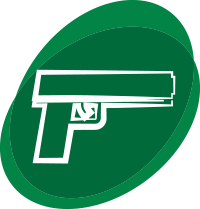Firearms violence results in hundreds of thousands of criminal investigations each year. To try to identify a culprit, firearms examiners seek to link fired shell casings or bullets from crime scene evidence to a particular firearm. The underlying assumption is that firearms impart unique marks on bullets and cartridge cases, and that trained examiners can identify these marks to determine which were fired by the same gun. For over a hundred years, firearms examiners have testified that they can conclusively identify the source of a bullet or cartridge case. In recent years, however, research scientists have called into question the validity and reliability of such testimony. Judges have also viewed such testimony with increased skepticism, especially after the Supreme Court set out standards for screening expert evidence in Daubert v. Merrell Dow Pharmaceuticals, Inc. In this Article, we detail over a century of caselaw and examine how judges have engaged with the changing practice and scientific understanding of firearms comparison evidence. We first describe how judges initially viewed firearms comparison evidence skeptically and thought jurors capable of making firearms comparisons themselves—without an expert. Next, judges embraced the testimony as comparison experts offered more specific and aggressive claims, and the work spread nationally. Finally, we explore the modern era of firearms caselaw and research, with an explosion of reported judicial decisions. Judges increasingly express skepticism and adopt a range of approaches to limit in-court testimony by firearms examiners. We conclude by examining lessons regarding the gradual judicial shift towards a more scientific approach towards expert testimony. The more-than-a-century-long arc of judicial review of firearms evidence in the United States suggests that over time, scientific research can displace tradition and precedent to improve the quality of justice.
Judging Firearms Evidence

Journal: Duke Law School Public Law & Legal Theory Series
Published: 2023
Primary Author: Brandon L. Garrett
Secondary Authors: Eric Tucker, Nicholas Scurich
Type: Publication
Related Resources
Forensic Toolmark Comparisons
Forensic practitioners determine whether two marks were generated by the same tool by observing the 2D images of the marks using a comparison microscope and deciding whether the “surface contours…
Effect of Subclass Characteristics on Congruent Matching Cells (CMC) Algorithm
This presentation is a continuation of subclass characteristics present on consecutively manufactured breech face inserts. The objective is to assess manufacturing methods similar to those used by firearm manufacturers. It…
What’s in a Name? Consistency in Latent Print Examiners’ Naming Conventions and Perceptions of Minutiae Frequency
Fingerprint minutia types influence LPEs’ decision-making processes during analysis and evaluation, with features perceived to be rarer generally given more weight. However, no large-scale studies comparing examiner perceptions of minutiae…
Diagnostic Tools for Automatic Cartridge Case Comparisons
The following was presented at the Association of Firearm and Tool Mark Examiners (AFTE) 2023, Austin, Texas, May 21-26, 2023. Copyright 2023, The Authors. Posted with permission of CSAFE.

